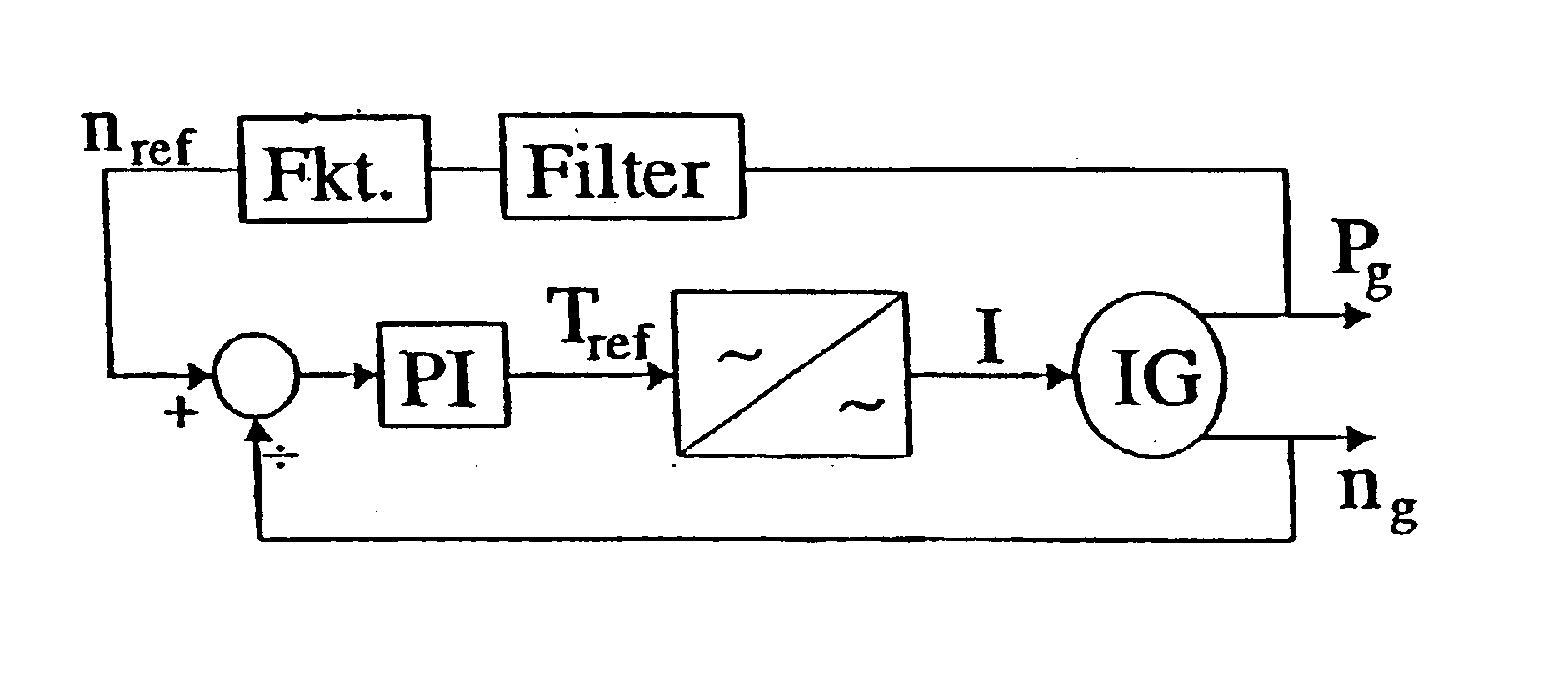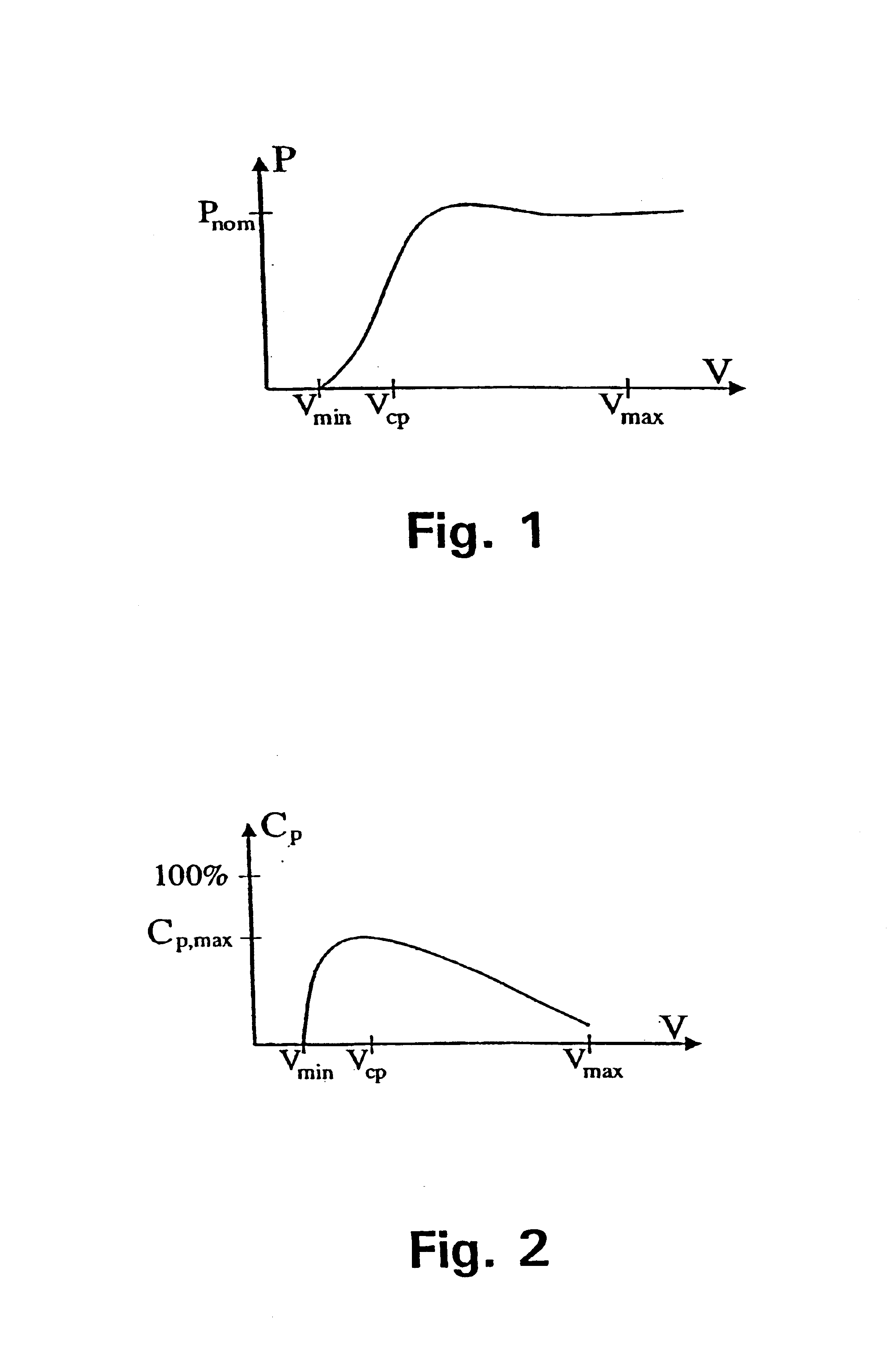Method of operating a turbine
a turbine and rotating technology, applied in the direction of wind energy generation, machines/engines, mechanical equipment, etc., can solve the problems of inability to increase shaft speed or torque unacceptably, and inability to achieve maximum power output at higher wind speeds. , to achieve the effect of reducing structural loads, optimum amount of energy, and reducing structural loads
- Summary
- Abstract
- Description
- Claims
- Application Information
AI Technical Summary
Benefits of technology
Problems solved by technology
Method used
Image
Examples
Embodiment Construction
At wind speeds below the minimum wind speed, vmin, no power is produced—the wind turbine is idle. When the wind speed exceeds vmin the turbine starts to operate and thus to produce power. The produced power increases with increasing wind speeds until the wind speed exceeds the optimal wind speed, where the nominal power, Pnom, of the turbine is reached and the produced power thus no longer increases, but stays substantially constant. At wind speeds exceeding the maximum wind speed, vmax, the wind turbine is preferably stopped, so as to minimise the risk of damage to the turbine due to the high wind speed.
FIG. 2 shows the mechanical efficiency, Cp, of a fixed speed stall controlled wind turbine as a function of the wind speed, v, at a nominal rotational speed, n0=1500 rpm, equivalent to 50 Hz. FIG. 2 corresponds to FIG. 1. Thus, since no power is produced at wind speeds below the minimum wind speed vmin, when the wind turbine is idle, Cp is also zero in this area. Cp increases for in...
PUM
 Login to View More
Login to View More Abstract
Description
Claims
Application Information
 Login to View More
Login to View More - R&D
- Intellectual Property
- Life Sciences
- Materials
- Tech Scout
- Unparalleled Data Quality
- Higher Quality Content
- 60% Fewer Hallucinations
Browse by: Latest US Patents, China's latest patents, Technical Efficacy Thesaurus, Application Domain, Technology Topic, Popular Technical Reports.
© 2025 PatSnap. All rights reserved.Legal|Privacy policy|Modern Slavery Act Transparency Statement|Sitemap|About US| Contact US: help@patsnap.com



